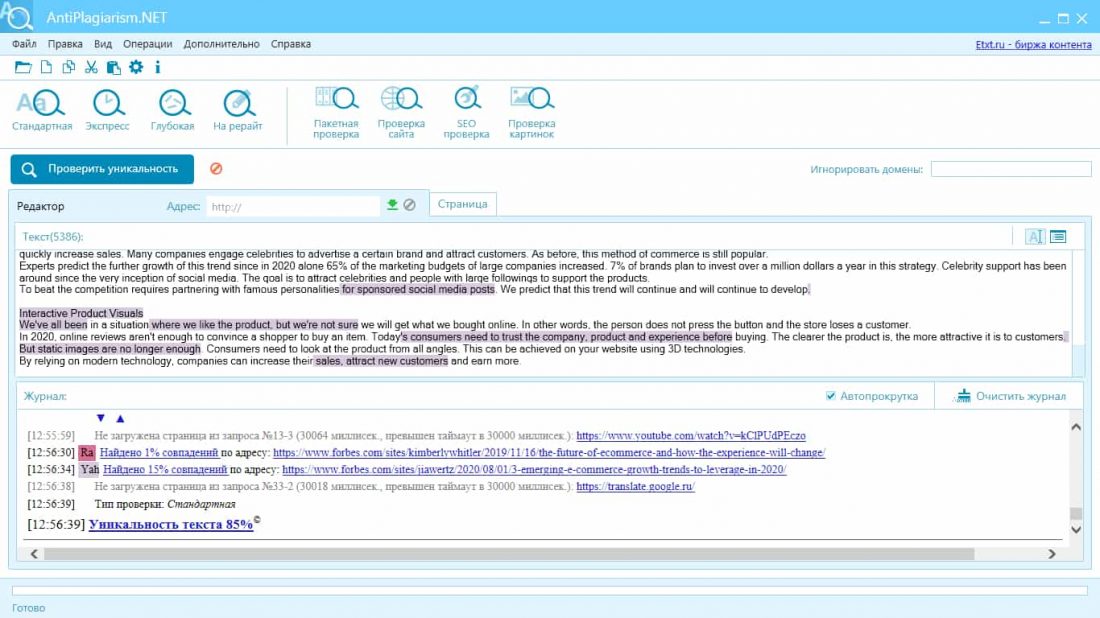3 E-commerce concepts you can use in 2023
Due to the coronavirus pandemic, e-commerce has taken up more place in people’s lives than ever before. Retail sales are no longer the most popular way to sell. However, e-commerce has taken on new dimensions in Canada and the United States with an increase of 129% over last year.
Many offline stores have started selling their products online to keep their businesses running.
Thus, e-commerce sales in the United States are projected to reach more than $700 billion in 2020, or more than 14 % of total U.S. retail sales. Compared to 2019, these sums increased from more than $600 billion, or more than 10% of total retail sales. “There has never been such a leap in the history of our country,” said Andrew Lipsman, chief analyst at eMarketer.
All the countries had to adapt to such drastic changes, and even the older generation had to shop online, even if they hadn’t done so before. COVID-19 has accelerated the popularization of e-commerce. We never saw such rapid growth in businesses that have gone online.
Companies that sold their goods online before the pandemic also received more orders due to declining retail sales. Global e-commerce sales were projected to reach more than $4 trillion by the end of year, according to a report from e-commerce giant Shopify. However, creating your website and starting to sell your products there is not easy. It takes time, a lot of investment and strategies before the competition. Plus, online shopping trends are changing faster than ever before.
Changes in the economy imply rapid adaptation for both buyers and sellers. To attract customers, you need to predict customer behavior and know their desires. Here are three trends that experts mention.
Personalized commerce
Brands with high success rates in e-commerce use personalization technologies to be customer-centric and provide a personal touch to each customer. To be customer friendly, you need to properly display your content and your sales pitch. You must correctly insert product recommendations and specific suggestions based on users’ behavior, past activities, web-history, customer demographics, and other rich personal information. If you compare this approach with offline trading, you will notice that retailers also recommend and describe their products depending on the buyer and his requests. The human factor helps to outperform competitors. That’s what personalization is for – you need to mimic what a customer gets in a store using a personalized shopping path online.
Offer personalization is achieved through platforms such as social media and search engine tracking tools. They provide the ability to extract a ton of personal data about customers. This data includes searches, page visits, purchase history, and more. “Personalization is an essential step for a successful business and is the key to increased shopping and the future of e-commerce,” claims Juha Valvanne from Nosto, a technology platform that delivers a personalized e-commerce experience.
Customers buy almost half as many products if they are offered what they want. They may not know that they are interested in the product, but if you look at their hobbies on the Internet, you can assume that they will need the product. Most online shoppers share their personal information with a brand if it benefits their purchases.
If you use the right techniques to personalize products for your customers, the buyer will feel like you are know them well, like a friend or relatives. This emotional response evokes a sense of loyalty. To maximize ROI, retailers need to embrace and make personalized retail a reality for their consumers’ shopping experience.
Social Commerce through Famous Influencers
Social commerce differs from social media marketing in that you don’t redirect users to your online shop. Buyers can buy a product on the web they use. Social commerce combined with advertising from famous people can quickly increase sales. Many companies engage celebrities to advertise a certain brand and attract customers. As before, this method of commerce is still popular.
Experts predict the further growth of this trend since in 2020 alone 65% of the marketing budgets of large companies increased. More than 5% of brands plan to invest over thousand dollars a year in this strategy. Celebrity support has been around since the very inception of social media. The goal is to attract celebrities and people with large followings to support the products.
To beat the competition requires partnering with famous personalities for sponsored social media posts. We predict that this trend will continue and will continue to develop
Quality means a lot
We all had a situation where we like the product, but we’re not sure we will get what we bought online. In other words, the person does not press the button and the store loses a customer.

Nowadays online reviews aren’t enough to convince a shopper to buy an item. Today’s users need to trust the brand, it’s product, and they need know much before buying. The clearer the product is, the more attractive it is to customers. But simple images do not work nowadays even if they have high quality. We all need to look them through. This can be achieved on your website using 3D technologies and videos.
By relying on modern technology, companies can level up their sales, attract new clients and earn more.

